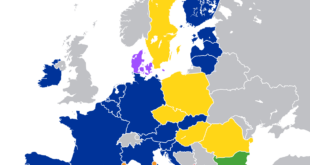After the Chinese government released a list of “standardised” names of 11 places in Arunachal Pradesh, the Indian authorities rejected the move “outright”.
China’s Ministry of Civil Affairs put out names of 11 places in Arunachal Pradesh in Chinese, Tibetan and pinyin characters which includes:
- two land areas,
- two residential areas,
- five mountain peaks and
- two rivers.
Is this the first time?
- This isn’t the first time that China has done something like this.
- It released two different sets of “standardised” names of places in Arunachal Pradesh back in 2017 and 2021.
Why this move?
- China claims some 90,000 sq km of Arunachal Pradesh as its territory.
- It calls the area “Zangnan” in the Chinese language and makes repeated references to “South Tibet”.
- Chinese maps show Arunachal Pradesh as part of China, and sometimes parenthetically refer to it as “so-called Arunachal Pradesh”.
- China makes periodic efforts to underline this unilateral claim to Indian territory.
- Giving Chinese names to places in Arunachal Pradesh is part of that effort.
Which places were featured in the previous lists?
2017 list contained six places in the state.
- Wo’gyainling,
- Mila Ri,
- Qoidengarbo Ri,
- Mainquka,
- Bumo La
- Namkapub Ri
The latitude and longitude listed with the names showed those places as:
- Tawang,
- Kra Daadi,
- West Siang,
- Siang (where Mechuka or Menchuka is an emerging tourist destination),
- Anjaw, and
- Subansiri respectively.
The 2021 list included:
- eight residential areas,
- four mountains,
- two rivers, and
- a mountain pass.
China’s argument for claiming these areas
- The People’s Republic of China disputes the legal status of the McMahon Line, the boundary between Tibet and British India that was agreed at the Simla Convention.
- Officially the Simla Convention was the ‘Convention Between Great Britain, China, and Tibet’ — of 1914.
- The McMohan Line, named after Henry McMahon, the chief British negotiator at Shimla, was drawn from the eastern border of Bhutan to the Isu Razi pass on the China-Myanmar border.
- China claims territory to the south of the McMahon Line, lying in Arunachal Pradesh.
- The Chinese representative did not consent to the Simla Convention, saying Tibet had no independent authority to enter into international agreements.
- China also bases its claims on the historical ties that have existed between the monasteries in Tawang and Lhasa.
SOURCE: THE HINDU, THE ECONOMIC TIMES, PIB
 Chinmaya IAS Academy – Current Affairs Chinmaya IAS Academy – Current Affairs
Chinmaya IAS Academy – Current Affairs Chinmaya IAS Academy – Current Affairs



